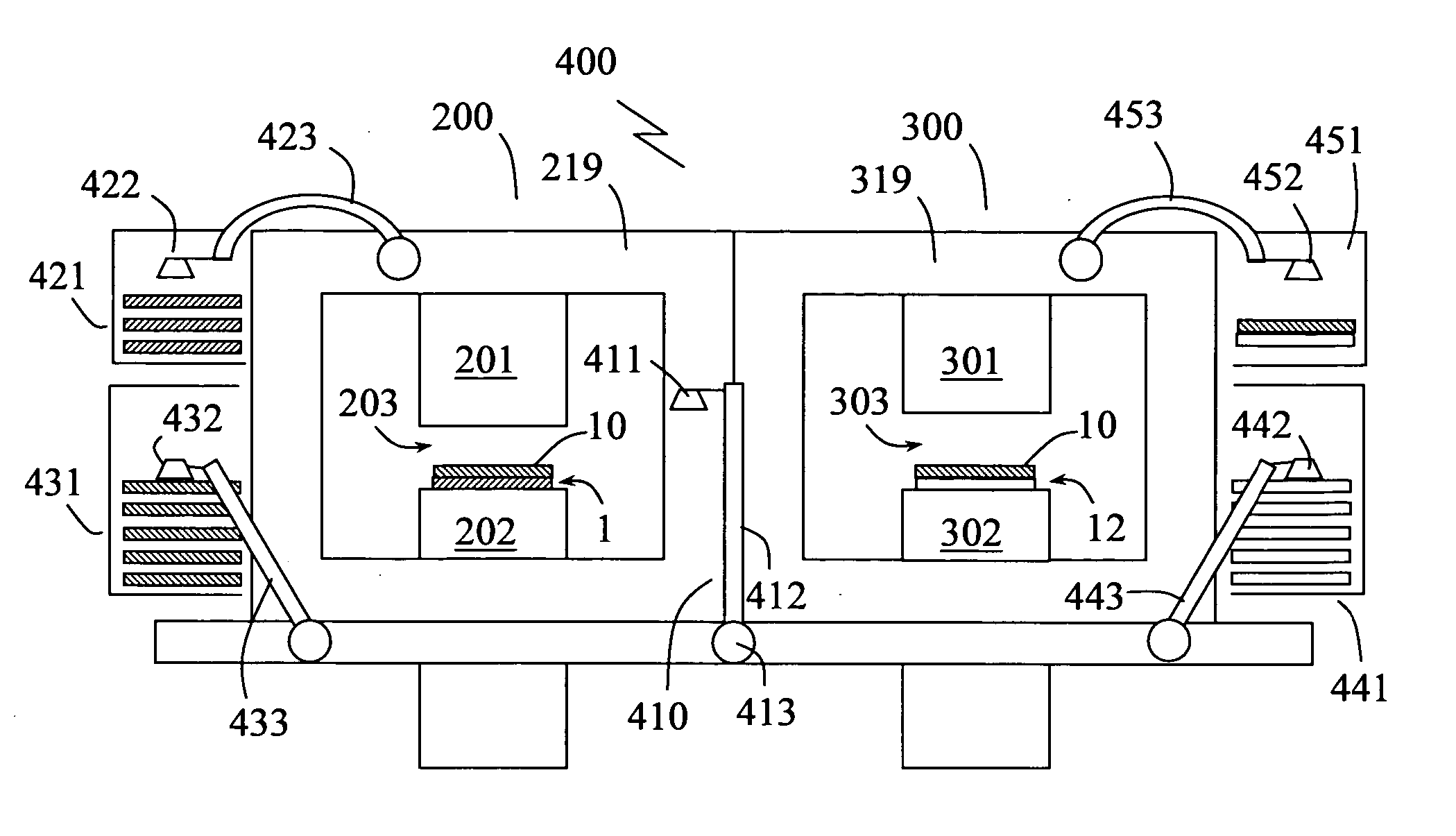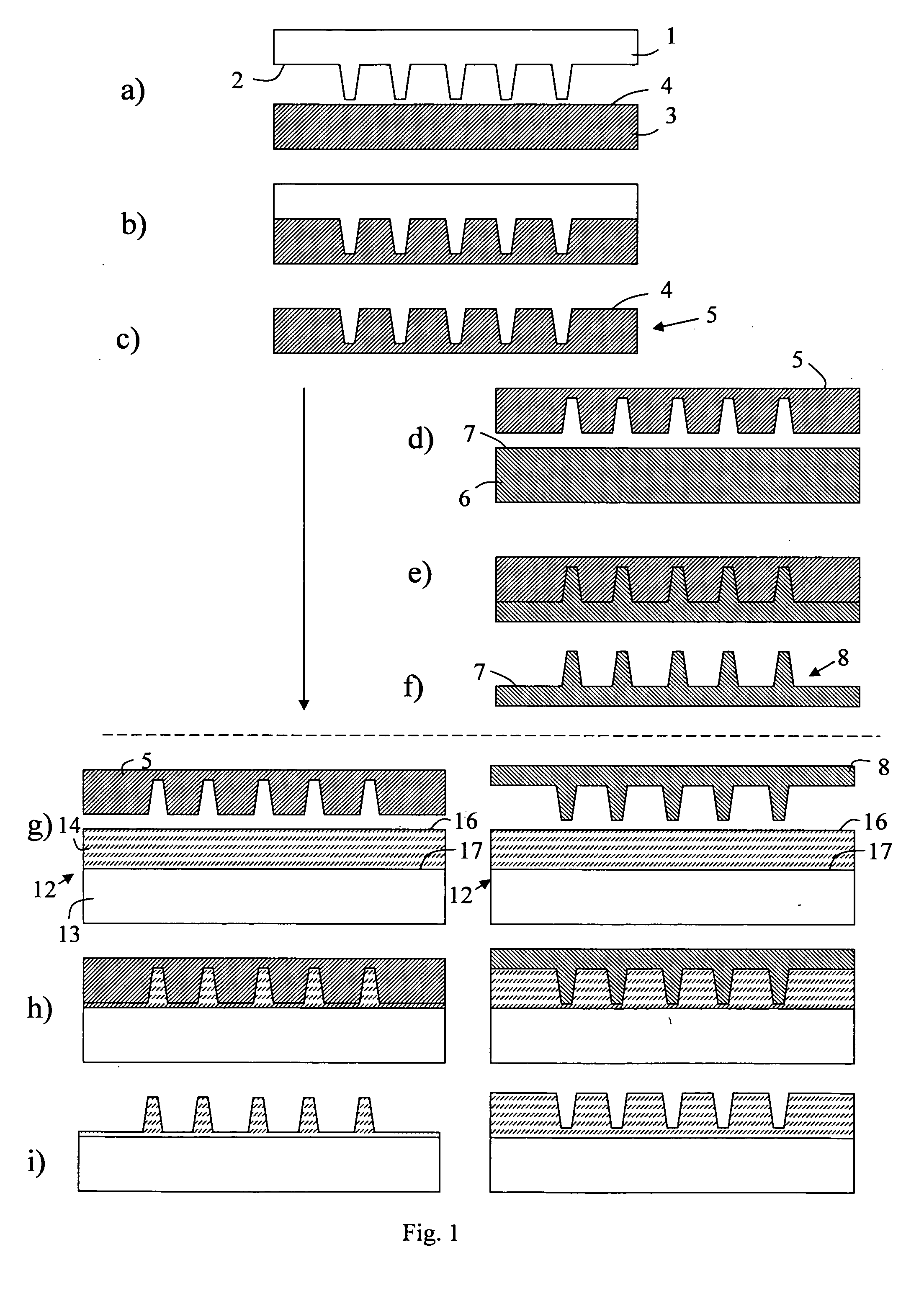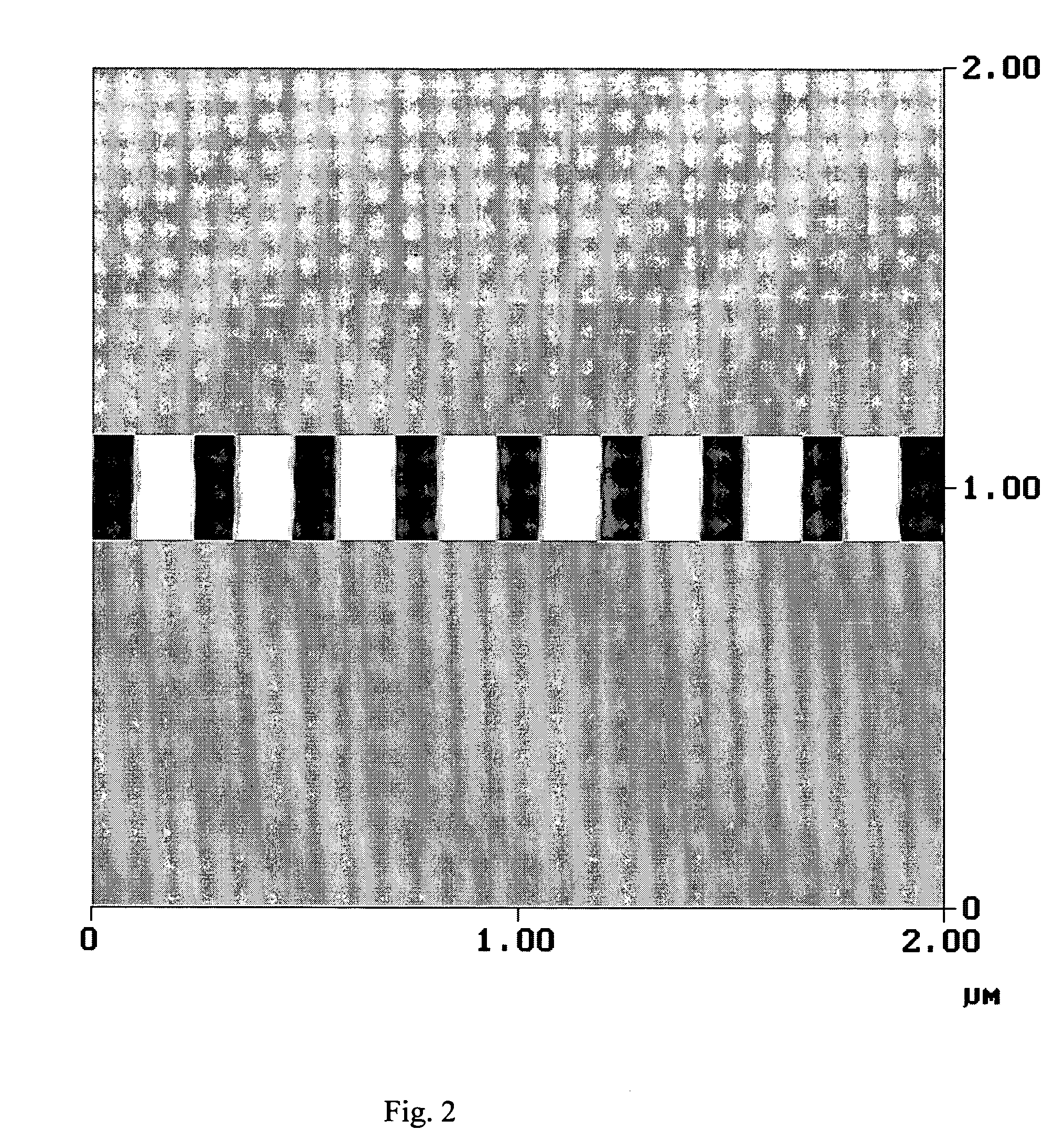Apparatus for pattern replication with intermediate stamp
- Summary
- Abstract
- Description
- Claims
- Application Information
AI Technical Summary
Benefits of technology
Problems solved by technology
Method used
Image
Examples
example 1
[0136] A nickel template whose surface exhibits a line pattern, having a line width of 80 nm and a height of 90 nm has been imprinted into a Zeonor ZF14 foil at 150° C. and 50 bar for 3 min. None of the surfaces have been treated by any additional coating such as, e.g. anti-adhesion layers. The release temperature was 135° C., at which the Zeonor foil could mechanically be removed from the nickel surface without damaging the pattern of neither the template nor the replica. The Zeonor foil has been used as a new template, which has been imprinted into a 100 nm thick SU8 film. The SU8 film was spin-coated onto a 20 nm LOR film, previously spin-coated onto a silicon substrate. Also here, none of the surfaces has been treated by an additional coating, having the purpose to improve the anti-adhesion behavior between the SU8 film and the Zeonor foil. The imprint was performed at 70° C. and 50 bar for 3 min. The SU8 film was exposed to UV-light for 4 seconds through the optically transpare...
example 2
[0137] A nickel template whose surface exhibits a BluRay pattern having structure heights of 100 nm and widths of 150 nm—investigated by AFM—has been imprinted into a Zeonor ZF14 using the same process and the same parameters as already described in Example 1. The Zeonor foil has been used as a new template, which has been imprinted into a 100 nm thick SU8 film. Also here the same process and the same parameters as already described in Example 1 have been used. The AFM image of an imprint result in the SU8 film deposited on a silicon wafer is shown in FIG. 3.
example 3
[0138] A nickel template has been used whose surface contains micro-meter patterns with high aspect-ratios ranging from 1-28. The feature size ranges from 600 nm to 12 μm, at a height of 17 μm. The surface has been covered by a phosphate-based anti-adhesion film before the imprint. The nickel template has been imprinted into a polycarbonate foil at 190° C. and 50 bar for 3 min. The surface of the polycarbonate foil has not been treated by an additional coating, having the purpose to improve the anti-adhesion behavior between the Ni template and the polycarbonate film. The release temperature was 130° C., at which the polycarbonate foil could mechanically be removed from the nickel surface without damaging the pattern of neither the template nor the replica. The polycarbonate foil has been used as a new template for an imprint into a Topas foil. The imprint has been performed at 120° C. and 50 bar for 3 min. None of the surfaces has been disposed by an additional coating, having the ...
PUM
| Property | Measurement | Unit |
|---|---|---|
| Temperature | aaaaa | aaaaa |
| Force | aaaaa | aaaaa |
| Pressure | aaaaa | aaaaa |
Abstract
Description
Claims
Application Information
 Login to View More
Login to View More - R&D
- Intellectual Property
- Life Sciences
- Materials
- Tech Scout
- Unparalleled Data Quality
- Higher Quality Content
- 60% Fewer Hallucinations
Browse by: Latest US Patents, China's latest patents, Technical Efficacy Thesaurus, Application Domain, Technology Topic, Popular Technical Reports.
© 2025 PatSnap. All rights reserved.Legal|Privacy policy|Modern Slavery Act Transparency Statement|Sitemap|About US| Contact US: help@patsnap.com



